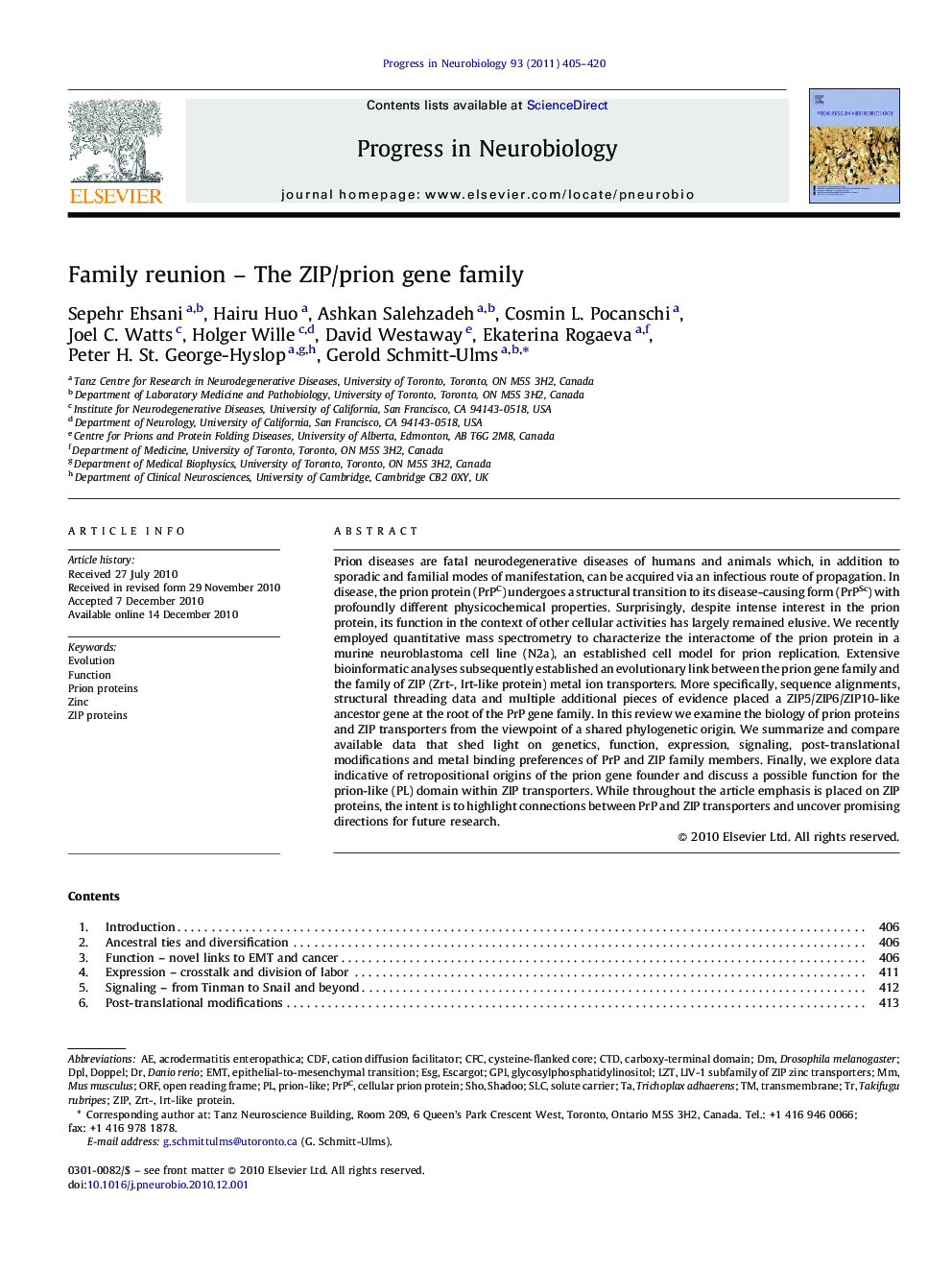| Article ID | Journal | Published Year | Pages | File Type |
|---|---|---|---|---|
| 4353687 | Progress in Neurobiology | 2011 | 16 Pages |
Prion diseases are fatal neurodegenerative diseases of humans and animals which, in addition to sporadic and familial modes of manifestation, can be acquired via an infectious route of propagation. In disease, the prion protein (PrPC) undergoes a structural transition to its disease-causing form (PrPSc) with profoundly different physicochemical properties. Surprisingly, despite intense interest in the prion protein, its function in the context of other cellular activities has largely remained elusive. We recently employed quantitative mass spectrometry to characterize the interactome of the prion protein in a murine neuroblastoma cell line (N2a), an established cell model for prion replication. Extensive bioinformatic analyses subsequently established an evolutionary link between the prion gene family and the family of ZIP (Zrt-, Irt-like protein) metal ion transporters. More specifically, sequence alignments, structural threading data and multiple additional pieces of evidence placed a ZIP5/ZIP6/ZIP10-like ancestor gene at the root of the PrP gene family. In this review we examine the biology of prion proteins and ZIP transporters from the viewpoint of a shared phylogenetic origin. We summarize and compare available data that shed light on genetics, function, expression, signaling, post-translational modifications and metal binding preferences of PrP and ZIP family members. Finally, we explore data indicative of retropositional origins of the prion gene founder and discuss a possible function for the prion-like (PL) domain within ZIP transporters. While throughout the article emphasis is placed on ZIP proteins, the intent is to highlight connections between PrP and ZIP transporters and uncover promising directions for future research.
Research highlights► Vertebrate prion genes are evolutionarily derived from a ZIP5/6/10-like ancestor gene. ► PrP and ZIP transporters share functional involvement in epithelial-to-mesenchymal transition events. ► Observations are consistent with retropositional origins of the prion founder gene. ► The prion-like ectodomain in a subset of ZIP transporters may act as a negative regulator of zinc uptake with a metal-dependent release functionality.
